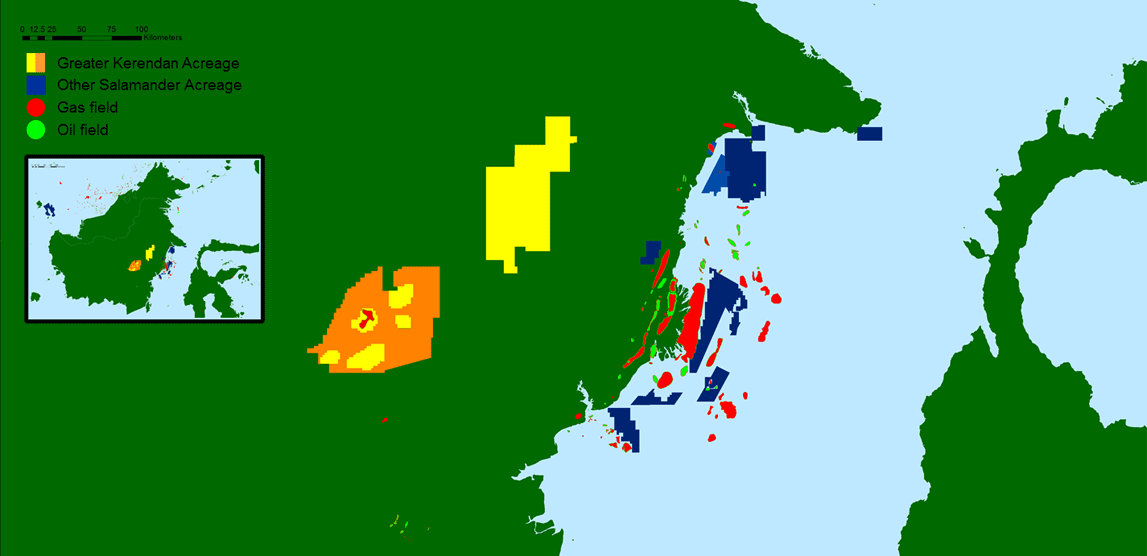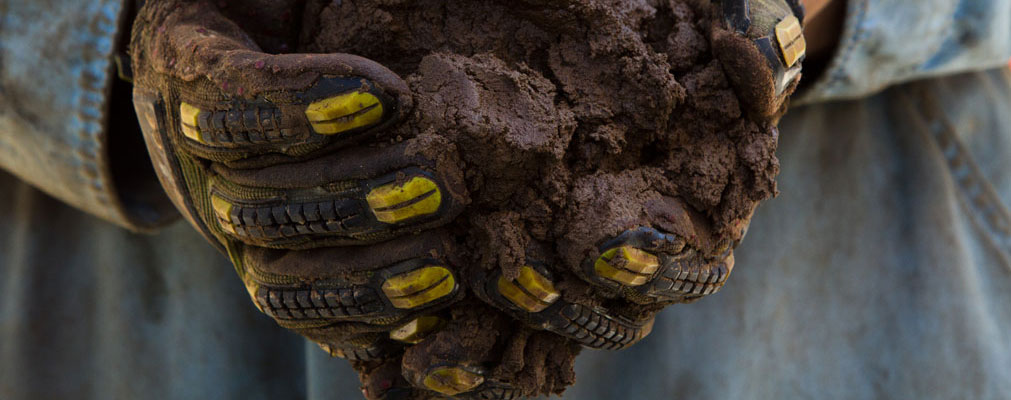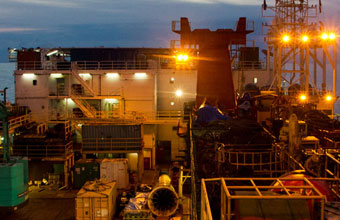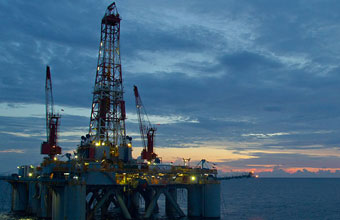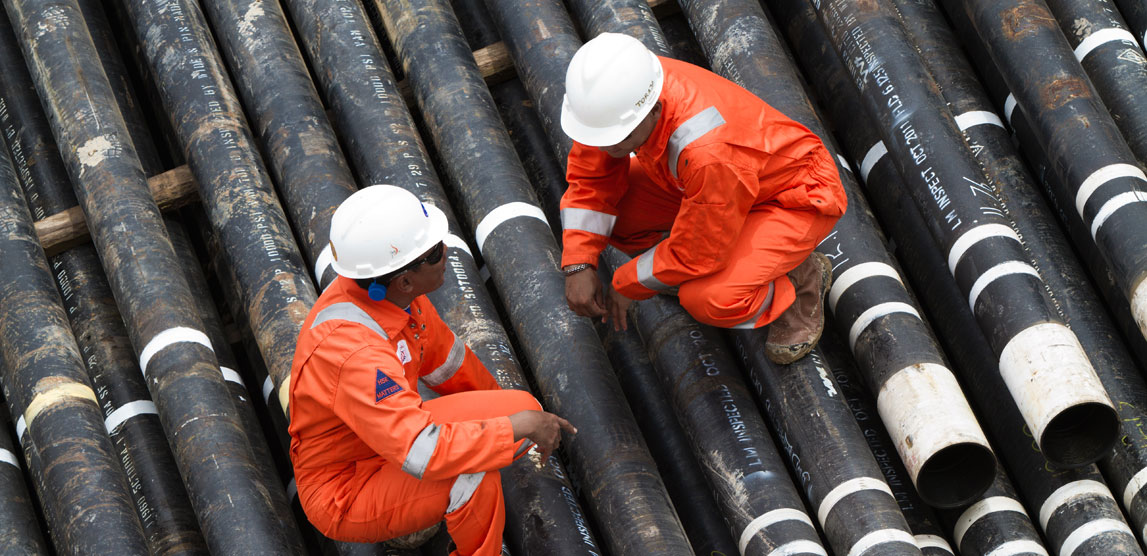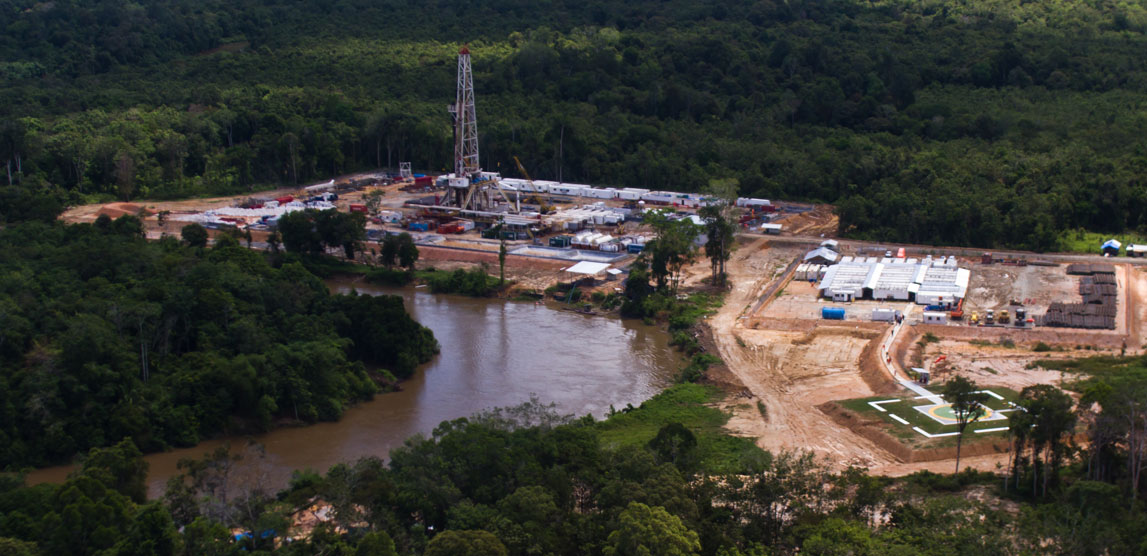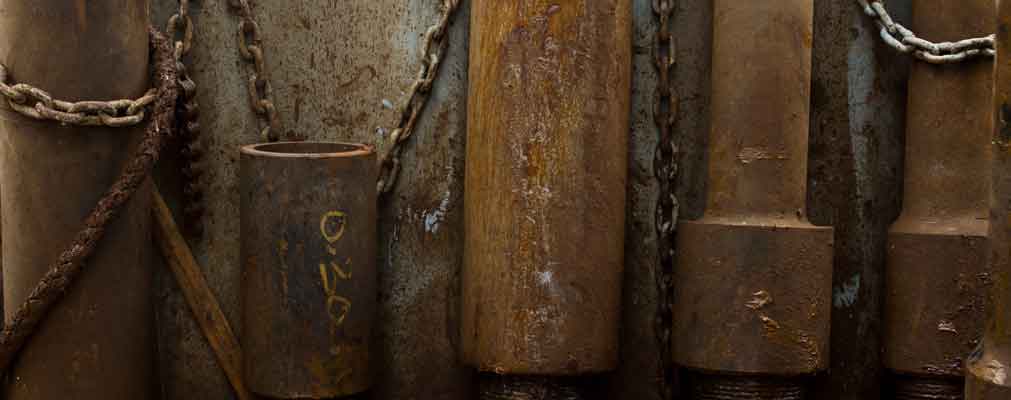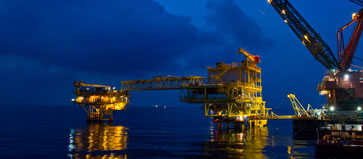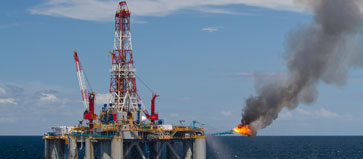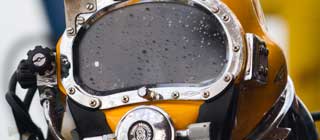The Bangkanai PSC is located on the western side of the Kutei Basin onshore Kalimantan, north of the Barito Shelf. North of the Teweh High is the Kerendan depression, a large area with over 12,000 ft of sedimentary strata where a large part of the Bangkanai PSC is located. The Kerendan gas discovery is situated on the northwest flank of this depression.
Four major phases of sedimentation are recognised in the northwest part of the Kutei Basin: Early to Middle Eocene; Late Eocene to Early Oligocene; Late Oligocene; and Miocene.
Each of these phases is separated by a major change in sedimentation regime, tectonic event or palaeo-geography.
Upper Oligocene platform carbonates (Berai Formation) occur extensively on the Barito shelf in southeastern Kalimantan and are flanked northward by coeval slope and basinal deposits (Bongan Formation) which accumulated in the southwestern part of the Kutei Basin. The distribution of these facies is fairly well constrained by the study of outcrops, wells and seismic profiles. The Berai Formation consists of diverse limestone types with a wide range of textures and with dominant skeletal components of large foraminifera, red algae and corals.
Deposition of the Berai Formation occurred in moderate- and high-energy shallow-marine conditions. Slope and basin facies occur in extensional basins adjacent to the shelfal carbonates and peripheral to isolated carbonate buildups. Slope deposits consist of hemipelagic claystone, debris-flow conglomerate, calci-turbidite, and volcaniclastic intervals. Basinal deposits consist of calcareous claystone with intercalated thin, distal calci-turbidite and volcaniclastic beds.
The carbonate build-ups generally occur as isolated bedded mounds, from a few feet up to 1000 ft in thickness. The preservation of primary porosity is generally poor due to diagenetic processes during burial history, particularly the infilling of pores by non-ferroan calcite cement. The development of secondary porosity is limited, due to the retardation of subsurface fluid flow by non-permeable layers, and the absence of solution effects due to sub-aerial exposure and karstification. Preserved porosities are mainly present as vugs, best developed in coarse-grained shelf-margin facies, which may not have subsequently been completely filled by calcite cement.
Top seal is provided by the overlying pro-delta shales of the Miocene section. The source rocks are mainly Eocene shallow marine carbonaceous mudstone of the Tanjung Formation, Oligocene shale of the Bongan Formation and claystone, mudstone and coals of the Miocene section estuarine, deltaic and shallow marine facies.
Migration timing is most likely to have been post Miocene uplift, with short migration distances from local sources. Current mapping shows that the Kerendan Field comprises an anticlinal structure coincident with a reefal facies carbonate buildup. Stratigraphic trapping may be possible where the reef rim grades to tight lagoonal facies.

